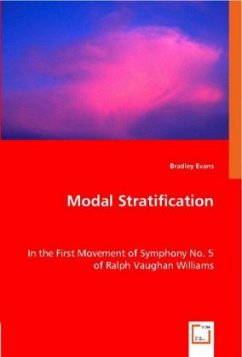The First Movement of Symphony No. 5 of Ralph Vaughan Williams is examined with respect to modal stratification or layers of modal strata defined in each of the principal orchestral parts. When examined with this perspective, this movement can be viewed in light of the concept of extended modal harmonies. Structural and functional pillars of modality lend cohesion to the overall textural fabric of the piece. This music can be described as a departure or, more accurately, another evolutionary branch from the extended tonal techniques of the time of Vaughan Williams, espoused by Schoenberg and the Second Viennese School. This work can therefore be classified as using a modal extended technique in the tradition of nineteenth- and twentieth-century Post-Romantics. Stratification of modal layers is found in five sections of the piece, and structural pillars, or hinges of modal coherence are found. These are graphically illustrated to reveal the formal structure of the piece. Hypotheses regarding the examined data (the notes) are made, from which conclusions about the compositional technique of Vaughan Williams and the structural cohesion and integrity of the piece are formed.








